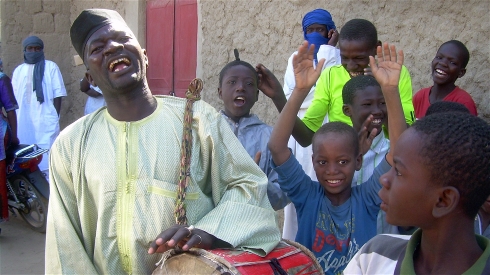The View from Timbuktu

from IRIN
TIMBUKTU — Residents of Timbuktu, Mali's cultural capital, are hopeful the city can draw on its long history of tolerance to heal social relations frayed by a 10-month Islamist occupation, which Arab and Tuareg communities are still being accused of having abetted.
In his book on the recent Islamist occupation of Timbuktu, La Ville Sainte dans les ténèbres du Jihadisme (The Holy City in the Darkness of Jihadism), senior government official Houday Ag Mohamed, a Tuareg, explains that successive insurgencies over the years led to a wave of discrimination and hostility against Tuareg and Arabs living in Mali. It is "an ostracism you can see in the looks full of hate and recrimination they receive," he said.
A Timbuktu resident who gave his name only as Mohamed says he sometimes feels mistrust from other communities, and hints that the organization that nominally represents the Tuareg, the National Movement for the Liberation of [Azawad] (MNLA), has much to answer for. The MNLA captured parts of the north after the March 2012 coup in the capital, Bamako; they were subsequently overthrown by the Islamists. "Did they ask people if they wanted an insurgency? There was no consultation. They just left us to reap the harvest," Mohamed said.
The Islamists were beaten back by French forces, which intervened in January 2013 as the insurgents began to advance towards Bamako.
But Salem Ould el Hadj, 73, a retired teacher, warns against oversimplifying Timbuktu's complicated ethnic mosaic. "There is not some big racial divide here. We have never had apartheid here. People pray together, read together and travel together. Go around the markets and you will see white and back traders working side by side. Go back in history and you will find that it has been like that since the 14th century," he said.
Recent Updates
1 day 6 hours ago
1 day 7 hours ago
1 day 7 hours ago
4 days 10 hours ago
1 week 2 days ago
1 week 2 days ago
1 week 3 days ago
1 week 3 days ago
1 week 4 days ago
1 week 4 days ago